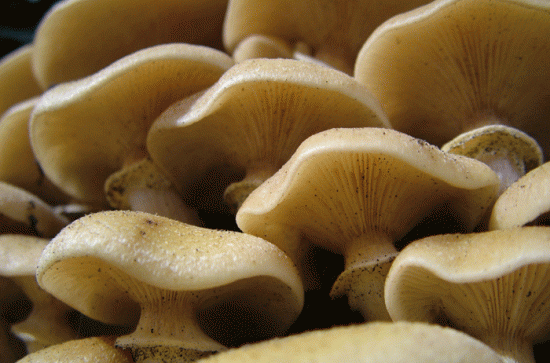
International team of scientists unravel the genome of monstrous 10km2 mushroom
An international team of scientists, including five researchers from Maynooth University, have sequenced and analysed the genome of the largest living organism on planet Earth, revealing the secrets of a deadly fungal organism larger than the Phoenix Park. The mushroom, Armillaria ostoyae, is thought to be thousands of years old and covers an area of 10km2 in Oregon, USA. The Armillaria species are amongst the most devastating fungal pathogens in the world, causing root rot disease in more than 500 plant species, contributing to deforestation and climate change.
The team of scientists which included five researchers from the Department of Biology at Maynooth University (Dr David Fitzpatrick, Professor Sean Doyle and PhD students Nicola Moloney, Eoin O’Connor and Rose Waldron) as well as researchers from the Hungarian Academy of Sciences, the U.S. Department of Energy Joint Genome Institute (DOE JGI) have recently sequenced the complete genome of four Armillaria species with a view to understanding how the Armillaria species grows to be so huge, the methods that it uses to seek food and how it has become such a proficient killer of its host plants.
The team’s research into the genetic mechanisms involved in the unique attributes of these extraordinary plants has been published in the prestigious Nature Ecology and Evolution.
The team was particularly interested in the Armillaria species’ ability to break down all the components of plants cell walls and the growth of strange shoestring-like appendages called rhizomorphs which the Armillaria uses to sift through the soil in search of new sources of food. Aside from the enormous Armillaria ostoyae, the team also analysed the genomes of A. cepistipes, A. gallica and A solidipes. This research built on previous work by Professor Dolye and Dr. Fitzpatrick first sequenced the genome of a smaller member of the Armillaria family, the honey fugus A. mellea, in 2013.
Using data generated by Science Foundation Ireland-funded facilities, the team found that the shoestring-like rhizomorphs may be multicellular structures, a discovery of great interest to evolutionary mycologists. The Armillaria species’ ability to break down plant matter on a cellular level is also of great interest with many potential applications for biotechnological and bioenergy researchers.
